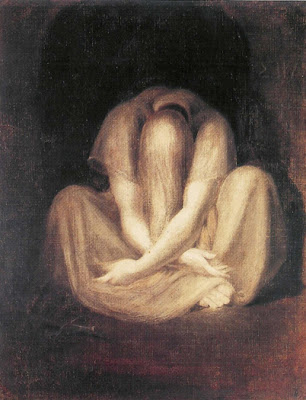|
Percy Bysshe Shelley
A Dirge (1822)
General introduction
Although written three years after the all-famous Ode to the West Wind, this short poem seems to be a fruit of quite the same mood.
As usual in Shelley’s works, nature and its wild forces are to be read as projections of the poet’s feelings and are often a mirror of his view of the world. Here, the elements themselves seem to be moaning for the injustice that is corrupting the society.

Read the text
Rough wind, that moanest loud
Grief too sad for song;
Wild wind, when sullen cloud
Knells all the night long;
Sad storm whose tears are vain,
Bare woods, whose branches strain,
Deep caves and dreary main,—
Wail, for the world's wrong!
ACTIVITIES
Comprehension and interpretation
- How are the wind and, more generally, natural forces represented in the poem? What language device does the poet use in order to describe them? Scan the text and find nouns, verbs and adjectives that help to convey this effect.
- What image do they convey?
- Which of the five senses are more involved by the representation?
-
What does the word dirge mean? You can look it up in a dictionary if you don’t know it.
-
What connection does the poet establish between the title and the images that are conveyed by the poem?
- What feelings does this combination arise in the reader?
- In your opinion, what vision of the world does the poet want to communicate? Does it imply a moral judgement, and who or what is at the stake?
Textual and linguistic analysis
Sound
-
Can you find and list any examples of onomatopoeic sounds in the text? What effect are they intended to create?
-
The author also exploits alliteration: what sounds are repeated and where? To what purpose?
-
Rhythm and rhyme
-
Trace out the stress pattern of each line. What kind of meter does the poet use? Is it similar to the typologies you have met so far?
-
What is the rhyme scheme? Is there something peculiar when compared with the patterns you are more familiar with?
Sources and materials
-
Wikictionary: read the definition of the word "dirge".
[E1]
-
Ode to the West Wind - Wikipedia: guided textual analysis, commentaries, biographic notes and criticism about this major Ode, that is strictly connected to the text that has been dealt so far.
[E2]
( Ode to the West Wind: full original text) [E3]
 9/15
9/15

|